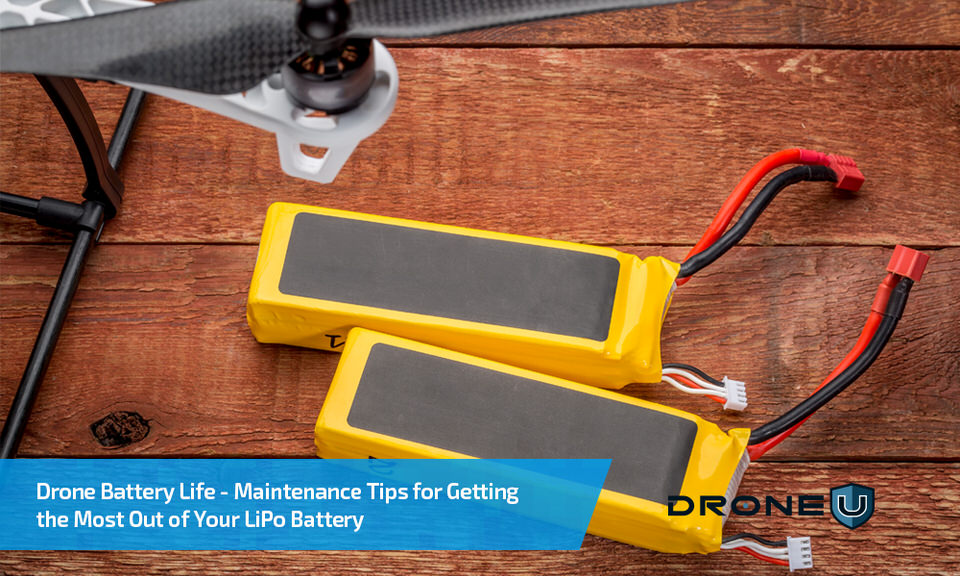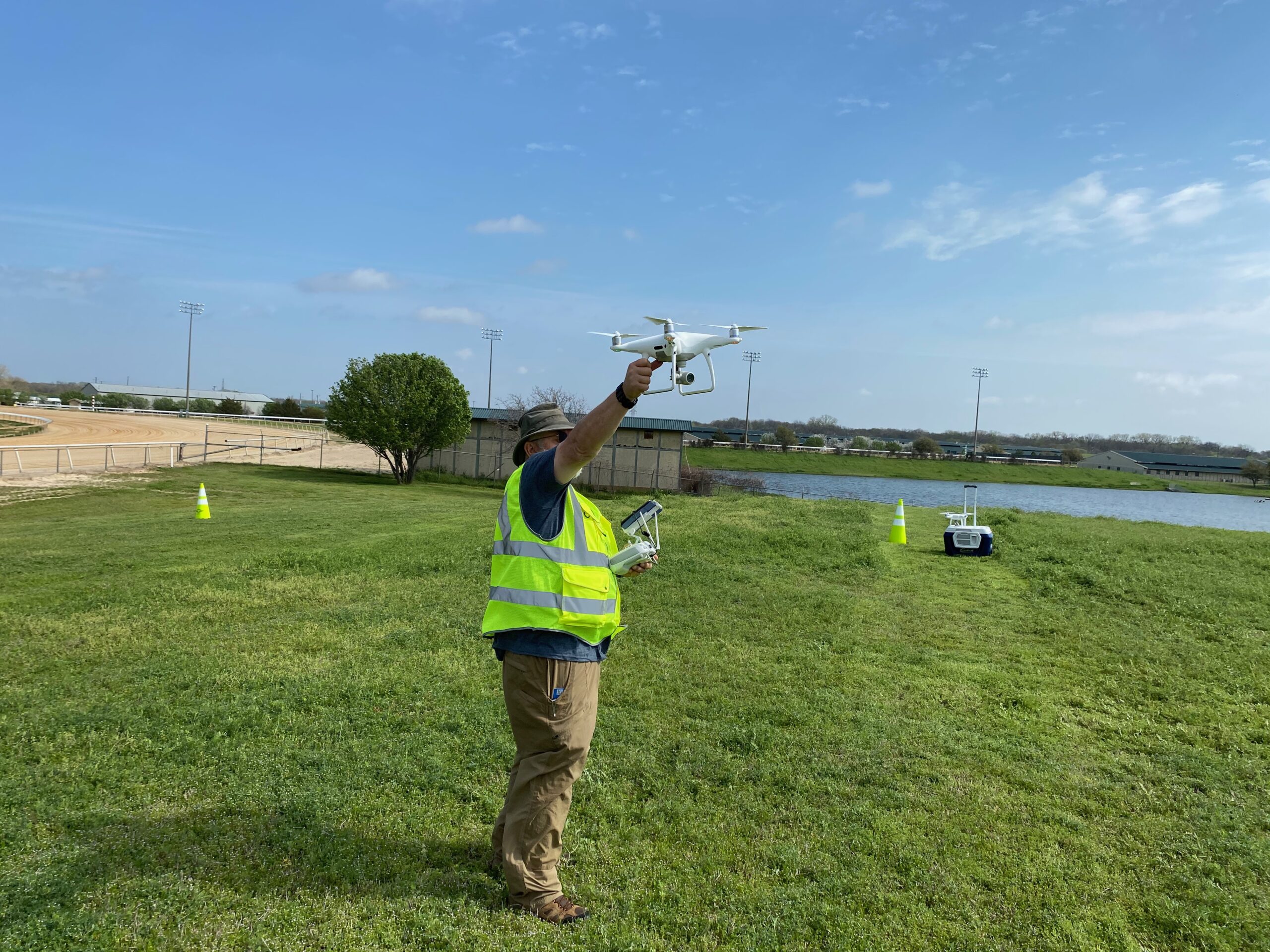Your drone comes with a LiPo or a Lithium Polymer battery. Your smartphone has a LiPo battery too. But, the similarity ends there. Drone batteries are comparatively more volatile and dreadfully expensive. Hence, taking care of them should be top priority.
Not all drones and their batteries are manufactured in the same way. For instance, Phantom batteries will last you longer than Mavic batteries. And Mavic batteries have a longer life compared to Spark batteries. Broadly speaking, your drone battery life depends on three main factors –
- How often you fly
- How you charge
- Where you fly
So, let us talk about each of these factors.
Have a Friday Flyday!
If you do not fly for a long time, your batteries can go bad quickly. We strongly recommend you practice a Flyday every Friday. This is a great way of keeping your battery in mint condition. Moreover, you can continuously improve your flying skills as well. Setting your battery to auto-discharge every 7 days is a great reminder to go out and fly your drone.
If your schedule does not permit you to go out and fly every week, at the very least, you SHOULD fly once every month. Your LiPo batteries have a high chance of failing if your drone remains idle for longer than this. Apart from a 1-week auto discharge, we recommend storing your drone batteries at 30% to 60% of total charge.
How to Charge Your Drone Batteries
Deep cycle your batteries once every ten flights to enjoy optimum drone battery life.
So, how do you deep cycle your drone batteries? There are two ways to do this –
You can fly your drone till it is about to lose power. When battery voltage drops to around 3.5 V or 5% of total charge, you can get your drone to hover and then eventually, auto land. Do not forget to roll your drone left and right during auto-landing. This toilet bowl movement will extract out all possible charge from your drone.
Another way of deep cycling your drone batteries is to land your drone but leave the power on. The LiPo battery will exhaust all charge after some time and the drone will automatically power off.
Flying your Drone in Hot Conditions
Planning on flying on a balmy summer day? You need to take extra precautions to prolong your drone life.
First of all, do not charge your batteries when they are too hot. For instance, in the Phantom 4 and Phantom 3, lights on the drone will start blinking when the drone batteries are really hot. In this scenario, we recommend waiting for at least 30 minutes to let the batteries cool down. Do NOT leave the battery charging when this light is blinking.
Another word of caution here – Do NOT attempt to artificially cool down your battery by putting them in a refrigerator or in front of an air conditioner. By doing so, you will drastically shorten your drone battery life.
How to Prolong Drone Battery Life in Cold Conditions
If you are flying in winter, be prepared for reduced drone battery life. In such instances, having a professional case like GPC will really help. Your LiPo batteries shall remain well insulated and warm.
When flying in cold environments, this is what you should do – Fire up your drone and leave the power on for a couple of minutes. Do not take off just yet. Turn the drone off and then back on. Doing so will help you extract some extra flight time.
When you are flying in extreme conditions, you can consider going a step further. First turn on your drone and leave it on for a couple of minutes. Then turn it off. Turn your drone back on and hover at 5 feet for 30 to 60 seconds. Bring the drone back and again turn it off. When you turn on your drone again, you will be able to enjoy prolonged drone battery life.
How to Travel with Your Drone Batteries
So, what is the best way to travel with your drone batteries? We recommend avoiding regional carriers and traveling with an airline like Southwest. Southwest’s entire fleet consists of 737’s. And because you can fit your drone case in the over-head cabinet, this is a great choice for drone pilots. Remember – FAA regulations do not permit storing Lithium Polymer batteries below the deck.
If you are going by road, do NOT leave your drone batteries in the trunk of your car. There have been instances when drone batteries left in pickup trucks have caught fire, and burned a hole right through the steel bed!
Longest Flight Time for Drone under $100
If you are noob drone pilot still testing the waters, and working on a tight budget, you need to buy a drone that gives you maximum bang for the buck. Below, you will find a list of popular drones priced below $100 and their flight times.
DJI Ryze Tello has the longest flight time for a drone under $100. Priced at $99, this drone can stay up in the air for a maximum of 13 minutes.
| Drone | Flight Time |
| Ryze Tello | 13 minutes |
| Cheerwing Syma X5SW-V3 | 7 minutes |
| Eachine E010 Mini UFO Quadcopter Drone | 5 minutes |
| Hubsan X4 Quadcopter | 5 minutes |
US-1 by Impossible Aerospace – The Drone with Longest Battery Life
US-1 by Impossible Aerospace is possibly the drone with best battery life. The man behind Impossible Aerospace, Spencer Gore is an ex-Tesla engineer.
So, what is the drone battery life for US-1? Without any payload, this drone can stay up in the air for nearly two hours. With a payload, you can still keep the drone up in the air for a very respectable 78 minutes.
This best in class flying time can be attributed to some very clever and efficient engineering – the battery cells actually form the structure of the drone.
With dimensions of 26” x 26” and weighing 16 pounds, the US-1 is not a small drone by any means. The US-1 comes with thermal and optical sensors courtesy the extremely capable, FLIR Duo Pro R. But all these goodies come at a price. Be prepared to fork out $7,000 for this drone.
Thermal and EO capabilities plus long battery life means that the US-1 is apt for use in emergency response.
Some More Tips to Prolong Drone Battery Life
- If you are unlucky, you might get a bad battery which goes kaput after just 25 cycles. If you encounter a bad battery, you can try this hack – Pop open the battery top, and then unplug the 5 pin port. Plug the port back in, reconnect, and then discharge the battery fully. Once completely discharged, recharge your battery again. This is not a sure shot solution but certainly worth trying.
- When you are flying over water, ram the elevation completely. And, if your voltage drops below 3.5V, bring the drone home immediately. You do not want the drone to auto land when you are flying over water. If the drone auto lands, you will have lateral control but no elevation control. And because of this, you might lose your drone.
- Remember to store your batteries in a cool dry, place
- Do not remove your batteries when all four lights are flashing. Doing so will severely impact drone battery life.
Check out our Medium page for more such content
Do not forget to subscribe and Listen to Ask Drone U, the #1 drone podcast
Connect with a vibrant drone community by becoming a Drone U member






Add Your Comment